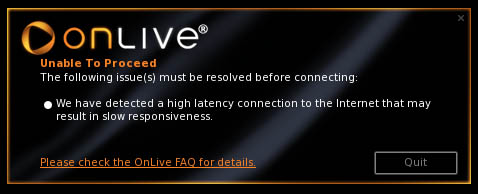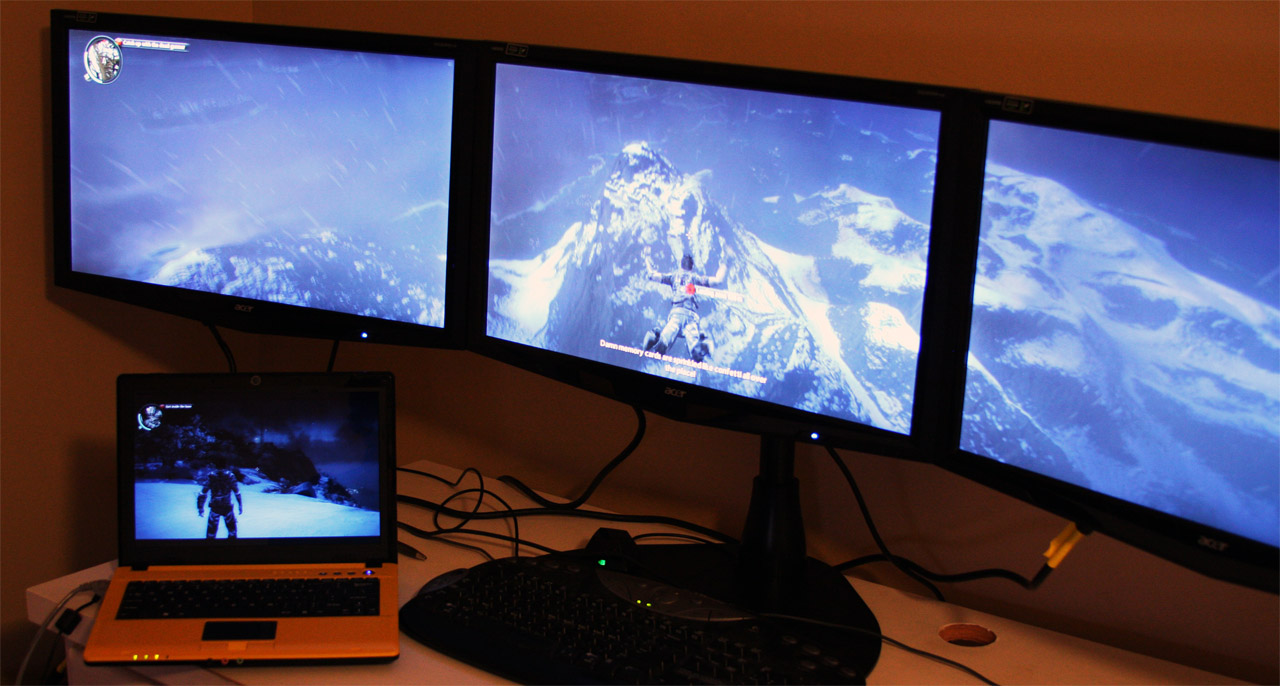OnLive Cloud-Based Gaming: Is This The End Of High-End PCs?
We've been hearing about OnLive's cloud-based service for more than a year now. The company claims it can offer the latest games on demand, without a need for meaty hardware requirements on the client end. Could this really be the end of high-end PCs?
Introduction
Count me amongst the many who heard Steve Perlman’s announcement of OnLive in 2009 and went “No bloody way. They can’t do that.” Yet here I am, some months later, with a Founding Members invite and access to a handful of the games I’ve used to benchmark graphics cards and CPUs on Tom’s Hardware. Well I’ll be…
I’ll refrain from bloviating on the specifics of how OnLive does what it does—I’ve already read plenty of analysis one way and the other about what a cloud service could mean for gaming and why it’s a technically infeasible (one of the best, from Digital Foundry’s Richard Leadbetter, can be read here). Moreover, OnLive has been fairly low-key about the information it’ll give out. All that matters today, on Day 1 of availability, is how it performs—the experience OnLive enables. It’s time to step away from the “what ifs” and dig into the “how does it do?”
Loading Up
Getting up and running after receiving the email literally took five minutes. You fill in your information, billing data, and download a 500KB client setup app, which, by default, runs in a window on your desktop. Just make sure that when you fire up the client, you’re not doing anything else to tax your Internet connection—which must be at least 5 Mb/s for a high-def stream. I have access to AT&T’s 24 Mb/s U-Verse plan, so I’m alright there, but when I tried to load the service with a file transfer running in the background, I was politely turned away from logging in. If it turns out that you share your pipeline with a college roommate, for example, that’s going to quickly become a problem. Here, we’re going from worrying about our graphics card to stressing over who’s using the network.
With all other transfers halted, I hopped on. For the folks who get in on the Founding Members plan, you can join OnLive for 12 months free, after which you pay $5 a month for the privilege of having your content delivered in this manner. From there, you can play many games in demo mode, 30 minutes at a time (without the ability to save). I need another monthly recurring bill like I need a hole in my head.
If you want to continue on, you’ll need a PlayPass, available in Full (unlimited access), 5-day, and 3-day options. Now, not all PlayPasses are offered for each game. If you want to play Batman: Arkham Asylum, you can buy a 5-day pass for $7 or a 3-day pass for $5, but there is no full pass. Assassin’s Creed II is only available as a full pass for $40. DiRT 2 is only available as a demo. The model that makes the most sense, I think, is paying a few bucks for a game you’d otherwise play and beat in a week and never touch again. Fair enough. No way I’d pay $50 for the full version of a game without a way around OnLive’s imposed Internet-optimized settings, though. Charge an extra $5 or $10 and give me the option to download the full game locally and I might be interested.
Now, I wanted to get the experience of using OnLive on a powerful desktop that’d have no trouble playing any of the available games using its own hardware, and then on a notebook with no chance of touching 3D at all.
Get Tom's Hardware's best news and in-depth reviews, straight to your inbox.
-
Bluescreendeath Nice article! Great for gaming on the go for low end PCs and notebooks, but the gaming PC remains king!Reply -
lashton i singed up for this and still have not been accepted, also i would prefer my local PC to play don't trust online companiesReply -
Ragnar-Kon I know for me it isn't the end of high-end machines.Reply
Reason? Well...
1. My internet isn't all that fast (1.6mb/s down, which is the fastest available in my area), which is far from their required 5mb down.
2. I actually enjoy shopping for parts and putting together a PC. I often spend hours on Newegg searching for parts, even if I have no plans on buying them.
3. I rather not pay to "rent" a game. If it is game I enjoy, I'll buy it.
Do I think this service will help people who don't know how to build their own computer, and who are willing to fork out the cash for fees and fast internet? Yes I do.
Is this service right for me? No. -
aznpwned It's the calm before the cloud computing storm.Reply
With the big companies pushing towards the cloud such as Apple, Microsoft, and Google (Cloud Video Editing). Cloud computing is only going to become more prominent. It's just not "there" yet.
Don't get me wrong, i'm all for locally based computing, but cloud computing is only going to grow bigger. -
maxiim Somewhere I heard that thing service is a POS. So I'd say NO it is definitely not an end to high end gaming PCs.Reply -
nforce4max Sure all is good till the network is down or suffers some high pings then all hits the fan. I much rather stick with the traditional rig when it comes to gaming and other things. Reliability is paramount when gaming.Reply -
JonnyDough ReplyOnLive Cloud-Based Gaming: Is This The End Of High-End PCs?
Answer: No. Especially not until we have better broadband speeds and availability here in the U.S. Nothing beats a LAN party. Nothin. -
JonnyDough Chris, I'm curious why you posted a picture of yourself. Do you love yourself that much? Its nice to try to get a connection with your readers, but in all honesty I don't care about you - I care about the tech. Posing yourself on here just seems kind of weird to me. I can already recognize you. Which is silly since I will most likely never know you unless I decide to run for president someday and decide to give you audience. :)Reply -
vabeachboy0 I was invited to beta, and it still has a a long way to go. I played dirt 2 on Onlive then i played the regular game there really is a big diffrence. Still too laggy for onlive ill stick to high end pc. High end pc gaming will never die.Reply



